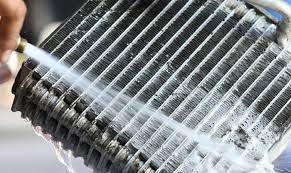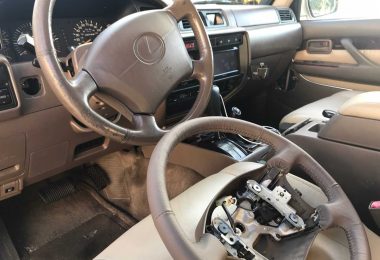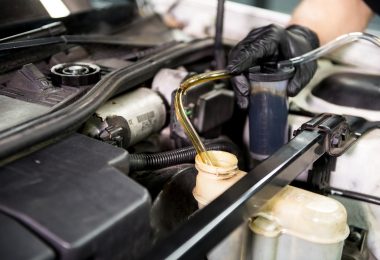If your car’s air conditioning isn’t blowing cold air and you don’t know how to fix it, then you’ve come to the right place. This article will teach you everything you need to know about diagnosing and fixing a broken AC system.
Is your car A/C blowing hot air and you don’t know how to fix it?
Maybe you were driving along, enjoying your air conditioning and then the next thing you know it’s hot as can be. Maybe it’s blowing warm air and you don’t know why. Either way, here are some possible reasons why your car A/C is not blowing cold air after recharge:
- Check your refrigerant level
- Check your evaporator core
- Check for leaks in the system
If your car’s A/C compressor will not engage and the refrigerant is full, then the most common cause is a bad pressure switch.
If your car’s A/C compressor will not engage and the refrigerant is full, then the most common cause is a bad pressure switch.
The pressure switch is mounted on the high pressure side of the system. It closes a circuit and allows current to flow to the compressor clutch when there is sufficient refrigerant pressure (in this case, under 65 psi). If there isn’t enough refrigerant pressure to close this circuit, no current will flow and therefore no power can be sent to your compressor clutch. The result? No cold air blowing through your vents!
If the A/C blows warm air after it has been recharged, the problem might be a dirty evaporator. It can be cleaned with a simple flush.
The evaporator is part of the system that cools the air. If you’re having trouble with cooling and your evaporator doesn’t have any visible signs of being clogged or damaged, there could still be some gunk built up inside it. This can usually be corrected by flushing it out with water and Freon-compatible cleaner fluid (which you should keep handy in case you ever need to recharge your AC again).
You’ll want to make sure that your compressor is operating properly before performing this task—if the compressor won’t turn on because its electrical contacts are corroded or something else is wrong with its wiring harnesses or internal components, then neither will anything else in this process work correctly!
Once everything checks out OK though, all that remains is cleaning out whatever gunk might have accumulated around where these hoses join together inside their respective tubing ports—and you’re done!
If the air conditioning system requires substantial repairs, it may just be more cost-effective to replace it altogether.
If you determine that the air conditioning system requires substantial repairs, it may just be more cost-effective to replace it altogether. The average cost of a new AC system can range from $300-$1,500 depending on the vehicle. If you are looking for a used AC system, this will most likely cost less than half of what you paid for your original vehicle’s cooling system.
If you’re planning on buying a new car with an existing AC unit and then selling it off after several years (or months), then this is certainly an option worth considering as well. However, if this option is not available and work needs to be done either way, then there are still ways around paying full price for repairs—especially if they will lead only to short term fixings anyway!
Orifice tubes often get clogged causing no cold air from your vents, especially if you’ve gone a long time without an AC recharge.
If your car AC is blowing warm air, it could be due to a clogged orifice tube. Orifice tubes are designed to regulate airflow into the evaporator case and out through the vents by controlling the size of openings in either side. If they become clogged, air flow can be restricted which can cause your ac not to blow cold air. If you suspect this is happening then check for any dirt build-up on these hoses and clean them off if necessary with a cloth/paper towel soaked in water only (no soap). If this doesn’t help, then it’s time for a recharge!
If an orifice tube breaks off completely from its hose connection point on either side, then you will still have coolant flowing through but no airflow will be allowed out through any vent slits that may be nearby since these openings have been covered up by broken pieces of plastic tubing inside your car’s ducting system (this may not always happen though). This would cause no cold air coming out whatsoever since without anything flowing through these pipes there won’t be any pressure being generated inside them–you’ll basically have no working cooling system at all because there aren’t any moving parts involved here besides maybe fan blades turning around constantly inside an electric motor housing unit attached somewhere near where all those wires meet up before going outside somewhere else like where I’ve seen my dad do various things but never looked too closely myself so maybe he put some kind of filter on top instead?
Check fuses and breakers as they can easily blow, especially after refilling your AC system with refrigerant.
If you are still finding that your AC is not blowing cold after a recharge and inspection of the following items, replace them:
- The AC filter can easily become clogged with dirt and debris. Cleaning it or replacing it will increase airflow through your system, allowing for better cooling. Check for a service bulletin about replacement filters in your car’s manual.
- The expansion valve regulates refrigerant flow into the evaporator core and may be damaged from overpressurization during servicing or from age-related wear and tear. You can install a new expansion valve yourself if you have basic wrenching skills or take it to an automotive shop to get it replaced there. This is usually less expensive than repairing an old one as well as being safer because if done improperly, this job could cause refrigerant leaks or worse yet lead to an explosion!
Low refrigerant is usually the reason why your AC is blowing warm air in your vehicle, but unfortunately adding more freon is rarely the solution.
It’s a good idea to know your air conditioner’s refrigerant levels before you need them. If you have a gauge, check the pressure and make sure it isn’t too high or too low. If it’s well within the normal range and your AC still isn’t blowing cold air, then it may be time for some troubleshooting. Read Also :Tips on How Much to Fix AC in a Car
If your system is leaking refrigerant, chances are that a leak has developed somewhere in the system over time. To fix this problem, you’ll need to replace any broken parts of your AC unit—including hoses, compressors and condensers.
Replace worn parts, repair leaks in hoses and connections and find out why your AC isn’t blowing cold air!
- Check the hoses and connections
- Check the AC compressor
- Check the evaporator
- Check the AC lines
- Check the AC condenser
- Check the AC evaporator
Conclusion
If you suspect that your car AC isn’t blowing cold air and have done everything we mentioned above to try and fix it, it may be time to take your vehicle into a shop. While there aren’t many parts that can cause this issue, sometimes the compressor can go bad if it’s been overworked for long periods of time or hasn’t been serviced regularly. If you notice any other symptoms such as loud noises coming from inside the engine bay or a lack of power when trying to accelerate quickly than these could also indicate problems with the compressors ability to function properly.
We hope this article has helped you understand what’s wrong with your AC system. If there are no leaks in the hoses and connections, then it could be a dirty evaporator that needs cleaning or replacing altogether. Or it could be something more serious like a leaky compressor or broken pressure switch that needs replacing immediately!







